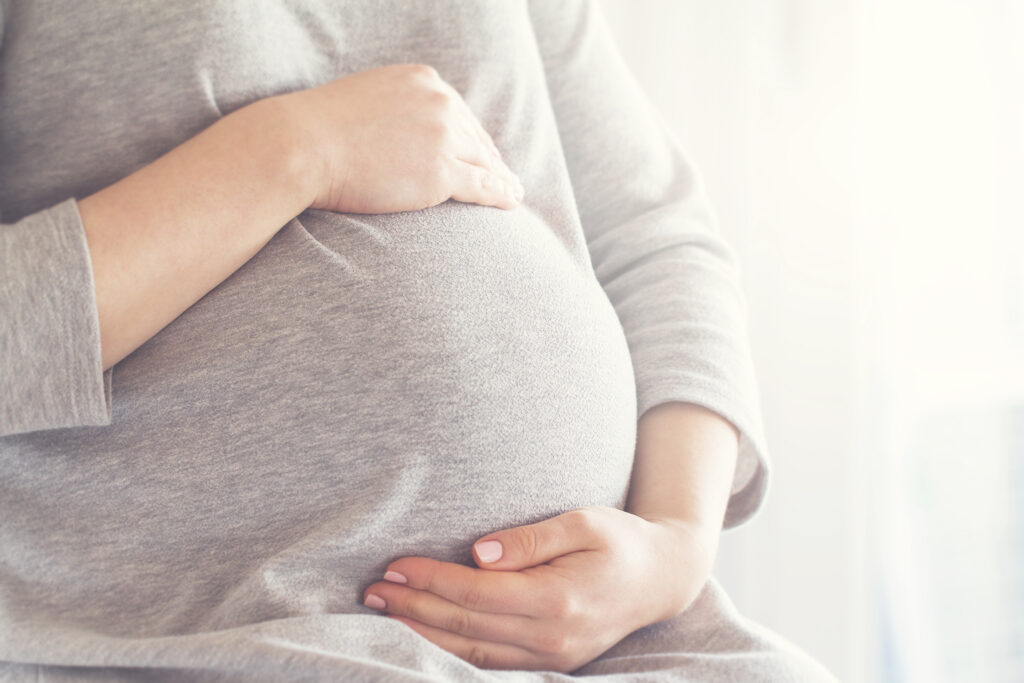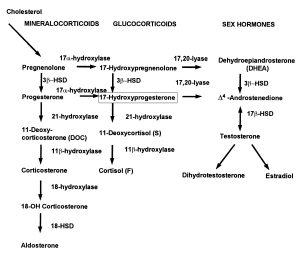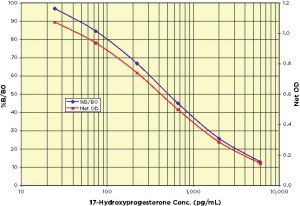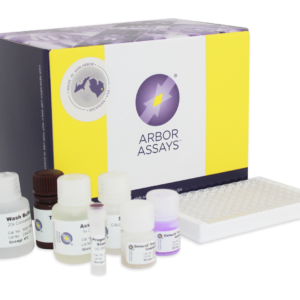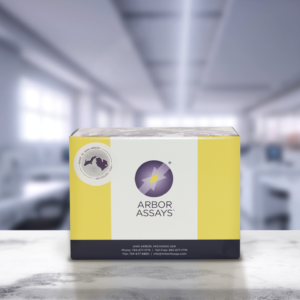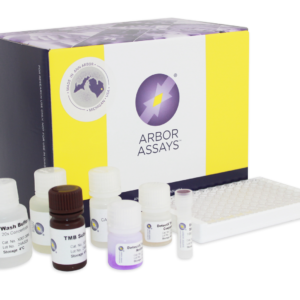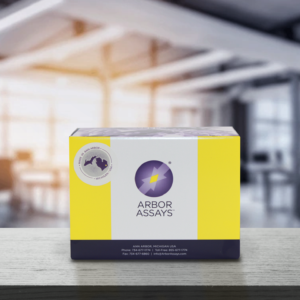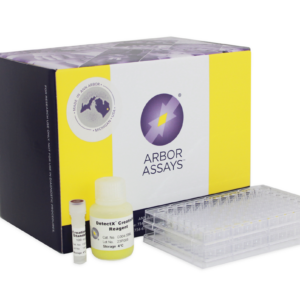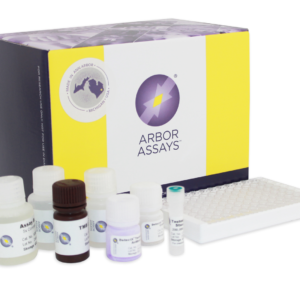Non-Invasive Pregnancy Analysis Utilizing Hydroxyprogesterone Kit
17-Hydroxyprogesterone (17-HO-P) is a steroid hormone from the androgen group found in mammals, reptiles, birds, and other vertebrates. It was first isolated from the adrenal glands of cattle by Pfiffner and North at Parke, Davis and Company in Detroit, Michigan in 19401. The adrenal glands, ovaries, testes, and placenta produce 17-hydroxyprogesterone. 17-HO-P increases in the third trimester of pregnancy.
Steroid Biosynthetic Pathway
17-HO-P is an endogenous progestogen as well as chemical intermediate in the biosynthesis of other steroid hormones, including the corticosteroids, androgens and estrogens. It is derived from progesterone via 17-hydroxylase, a P450c17 enzyme, and from 17-hydroxypregnenolone via 3ß-hydroxysteroid dehydrogenase 2/Δ5-4 isomerase. It is then hydroxylated at positions 11 and 21 to produce cortisol.
Deficiency of either 11- or 21-hydroxylase results in decreased cortisol synthesis, and feedback inhibition of adrenocorticotropic hormone (ACTH) secretion is lost. Consequent increased pituitary release of ACTH will increase 17-HO-P production. A deficiency in either 17-alpha-hydroxylase (which allows synthesis of 17-HO-P from progesterone) or 3ß-hydroxysteroid dehydrogenase type 2 (which allows development of 17-HO-P from 17-hydroxypregnenolone) may result in low levels of 17-HO-P, with a possible corresponding increase in progesterone or pregnenolone. Normal levels of 17-HO-P in children are 3-90 ng/dL. Normal levels in women prior to ovulation are 20-100 ng/dL, and 100-500 ng/dL during the luteal phase2,3.
Congenital adrenal hyperplasia (CAH) is caused by inherited defects in steroid biosynthesis. The resulting hormone imbalances, reduced glucocorticoids and mineralocorticoids, and elevated 17-HO-P and androgens, can lead to life-threatening salt-wasting in the newborn, and alter the development of primary and secondary sex characteristics in affected infants, children, and adults, leading to ambiguous gender assignment and infertility.
Our 17-Hydroxyprogesterone EIA 1-Plate and 5-Plate Kits, K053-H1 and K053-H5, allow for simple, sensitive, and rapid determination of 17-HO-P in urine, extracted serum, plasma, fecal samples, or culture media. Results are obtained in 90 minutes with sensitivity to 20 pg/mL. All reagents are stable at 4°C and supplied in liquid form.
17-Hydroxyprogesterone Typical Standard Curve
References
- Pfiffner JJ, and North , “17-ß-Hydroxyprogesterone” 1940, J.Biol.Chem. 132:459-460.
- Abbassi-Ghanavati M, Greer LG, Cunningham “Pregnancy and laboratory studies: a reference table for clinicians.” 2009 Obstet Gynecol. 114:1326-1331.
- Kratz A, Ferraro M, Sluss PM, Lewandrowski KB, “Case records of the Massachusetts General Weekly clinicopathological exercises. Laboratory reference values.” 2004, N. Engl. J. Med. 351:1548-1563.
Featured Products
-
In Stock
Progesterone ELISA Kit
$338.00 – $1,354.00The DetectX® Progesterone ELISA Kits quantitatively measure Progesterone present in extracted dried fecal samples, urine and tissue culture media samples. Used in determination of Reproduction and Sex Steroid Metabolism
-
In Stock
Cortisone ELISA Kit
$425.00 – $1,702.00The DetectX® Cortisone ELISA Kits quantitatively measure cortisone present in a variety of samples.
-
In Stock
Estradiol ELISA Kit
$320.00 – $1,277.00The DetectX® Estradiol ELISA Kits use a specifically generated antibody to measure estradiol and its metabolites in urine and fecal samples. This kit is not recommended for serum, plasma, or saliva samples.
-
In Stock
Estrone ELISA Kit
$327.00 – $1,305.00The DetectX® Estrone ELISA Kits are unique as it measures both non-conjugated estrone, estrone-3-sulfate and estrone 3-glucuronide in urine and fecal samples with almost equal affinity, allowing for non-invasive testing of this steroid.
-
In Stock
PGFM ELISA Kit
$425.00 – $1,702.00The DetectX® 13,14,Dihydro-15-keto-Prostaglandin F2α (PGFM) ELISA Kit measures PGFM present in non-invasively collected fecal and urine samples, as well as plasma, serum, and TCM samples.
-
In Stock
Urinary Creatinine Detection Kit
$306.00 – $1,223.00The DetectX® Urinary Creatinine Detection kits are designed to quantitatively measure creatinine in urine samples. A NIST calibrated creatinine standard is used to standardize the assay.
-
In Stock
Testosterone ELISA Kit
$353.00 – $1,409.00The DetectX® Testosterone ELISA Kits provide non-invasive measurements of Testosterone and Dihydrotestosterone.
